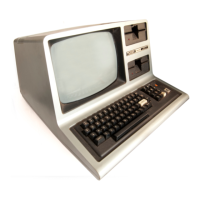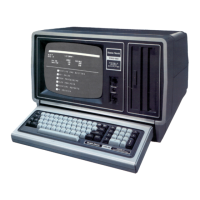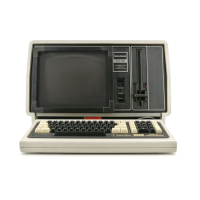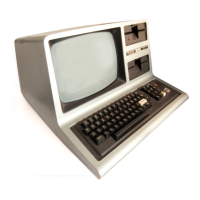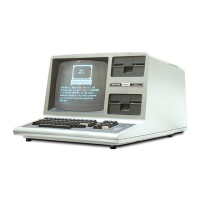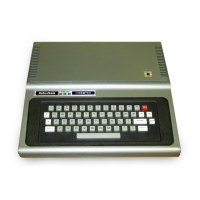After you enter address,
it
and the current byte appear
in
the lower
left corner of the screen. To modify the byte, type the new
hexadecimal value
and
press:
•
(SPACE
BAR)
to
modify the byte
and
move to the next address.
•
(ENTER)
to
modify the byte and exit from the H command.
•
00
to exit from the H command without modifying the byte.
If
you do not specify address, TRSDOS uses the current "memory
modification address" (shown by the vertical bars).
Example:
HD004
(SPACE
BAR)
causes address
0004
and
the current byte value to appear
in
the
lower left corner of the screen. TRSDOS allows you to enter the new
byte value. Then press
(SPACE
BAR),
(ENTER),
or
00
to continue.
I (Single-Step Execution)
Press
CD
to
single-step through the instructions pointed
to
by the
PC
register. This command
is
identical
to
the C command except that any
calls encountered are stepped through instruction
by
instruction. (Note
that RST 28H, RST
30H, and RST 38H instructions automatically
convert the I command
to
a C command.)
J (Jump)
Press
CD
to
increment the program counter (PC)
by
1.
o (Return to TRSDOS Ready)
Press
(]J
to
return toTRSDOS. DEBUG is not turned off. (Use the
DEBUG (OFF) command to turn DEBUG off.)
Q (Port)
There are two kinds of ports - input and output.
You
read
an
input
port and you write
to
an
output port.
Qport
Enter the above command line
to
read the byte at port and display its
value. There are 256 input ports
(00 - FF).
Example:
045
(ENTER)
displays the value of port 45
in
the lower left corner of the screen.
Qport,byte
Enter the above command line
to
write the value of byte to port.
There are 256 output ports.
1-59
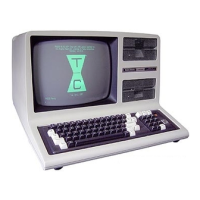
